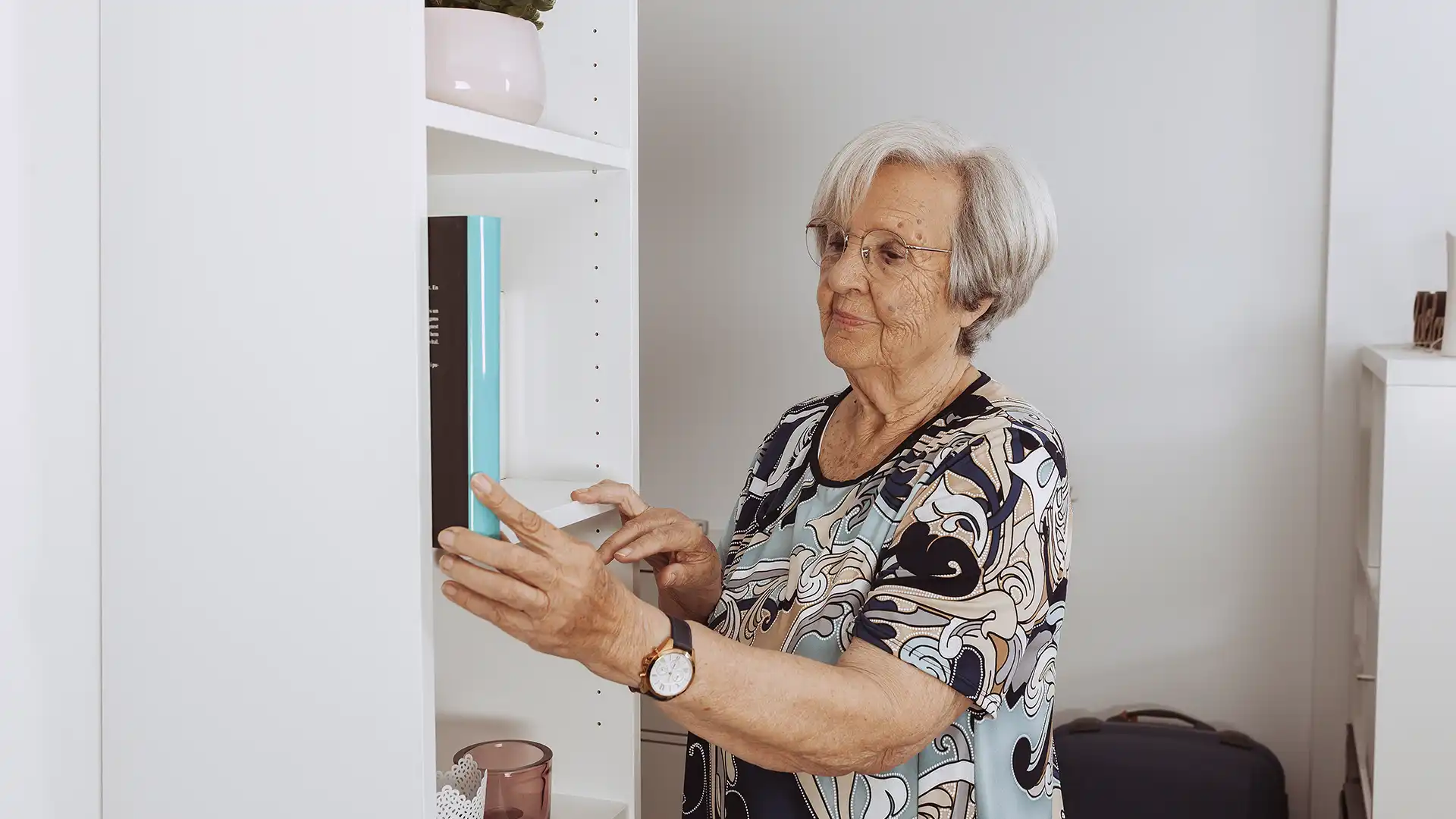summary
Is a therapeutic technique that involves using focused attention and suggestion to influence one’s thoughts, feelings, and behaviors. Unlike traditional hypnosis, which often requires a trained practitioner, self-hypnosis empowers individuals to enter
a state of heightened awareness and relaxation on their own. This practice has gained attention for its applications in mental health, pain management, and personal development, making it a notable component of complementary and alternative medicine (CAM) [1][2].
The process of self-hypnosis typically includes techniques aimed at fostering relax- ation, enhancing focus, and facilitating emotional regulation. By employing various strategies, such as visualization, breathing exercises, and affirmations, practitioners can tap into their subconscious to promote positive change and alleviate anxiety, stress, and chronic pain [3][4]. Research has indicated that self-hypnosis can lead to lasting behavioral changes and therapeutic benefits, particularly in clinical settings and among pediatric populations [5][6].
Despite its growing popularity, self-hypnosis is not without its controversies. Critics point to inconsistencies in the research surrounding its efficacy, highlighting method- ological flaws and the variability in outcomes across different studies [7][8]. Addi- tionally, while self-hypnosis can serve as a powerful tool for many, its effectiveness may vary based on individual suggestibility and the specific techniques employed [9]. These factors contribute to ongoing debates within the medical community regarding the integration of self-hypnosis into conventional treatment protocols.
Overall, self-hypnosis represents a unique intersection of psychological practice and personal empowerment, illustrating its potential as a valuable resource for individuals seeking to improve their mental health and overall well-being [10][11].
Mechanism of Action
Self-hypnosis operates through a variety of cognitive processes that facilitate a heightened state of focus and suggestibility. The primary objective is to foster a habit
of abstraction or concentration of attention, allowing the individual to become fully absorbed in a specific idea or train of ideas while remaining indifferent to other stimuli or distractions.[1][2] This focused attention can induce a peculiar condition of the nervous system, often described as a form of “nervous sleep” that differs significantly from both common sleep and the waking state. It is important to note that this state is not attributed to any magnetic or occult influences but is grounded in physiological and psychological principles.[1]
Brain Activity and Suggestion
Research indicates that changes in brain activity are observed in highly responsive subjects during hypnosis, particularly in light to medium states, which are associated with an increase in alpha wave patterns.[1] While these brain changes are evident, their implications regarding genuine alterations in perception or experience remain unclear. Some studies suggest that highly suggestible individuals may activate brain regions involved in imagination to a greater extent, leading to an enriched subjective experience without necessarily changing perceptual reality.[1]
The Role of Attention and Dissociation
The mechanisms underlying pain relief in hypnosis have been linked to theories of selective attention and dissociation. In this context, the brain exhibits dual-processing capabilities, with activity in pain-receptive regions being modulated based on the hypnotized individual’s focus on specific stimuli.[1] As such, different forms of sug- gestion—including direct verbal suggestions and more subtle non-verbal cues—are utilized to elicit varied responses. Contemporary hypnotism frequently employs a range of suggestion techniques, with distinctions made between permissive and authoritarian delivery styles.[2]
Long-Term Effects of Suggestions
Harvard hypnotherapist Deirdre Barrett emphasizes that many modern research suggestions aim for immediate responses, while hypnotherapeutic suggestions are often designed to create post-hypnotic effects that can influence behavior over extended periods. These therapeutic suggestions are typically repeated in multiple sessions to enhance their effectiveness, illustrating the potential for self-hypnosis to induce lasting changes in behavior and thought patterns.[2]
Techniques
Self-hypnosis encompasses a variety of techniques designed to enhance relaxation, focus, and emotional management. These methods are often structured to facilitate a deeper connection with one’s thoughts and sensations, allowing individuals to leverage their subconscious for therapeutic purposes.
Basic Exercises
Body Awareness
One fundamental technique involves increasing body awareness through a simple exercise. The practitioner places their hand on different parts of their body, such as their forehead, and focuses on the sensations felt at each location. This can be
repeated with various body parts, leading to an improved sense of awareness over time[3].
Magnetic Hands
The Magnetic Hands technique aims to direct attention towards feeling energy between the hands. The process begins by rubbing the hands together to generate warmth, followed by pulling them apart to create a sensation of energy, effectively drawing focus away from distracting thoughts[4].
Visualization Techniques
Describing an Image
In this method, individuals visualize an image in their mind, articulating the mood and sensations it invokes. This serves as a preliminary step towards deeper emotional exploration and understanding[3].
Visualization A Room
This exercise involves visualizing a familiar room in detail, followed by visualizing a less familiar one. The comparison of clarity between the two scenarios can provide insights into one’s mental visualization skills[4].
Breathing Techniques
Detailed Breathing
Detailed Breathing emphasizes the awareness of specific sensations while breathing. Practitioners focus on minute details, such as the tip of the nose or specific areas of the body, enhancing the depth of their relaxation experience[3].
Mindful Movement
This technique combines breathing with mindful movement. Practitioners focus on the sensations and pressures in their body as they breathe and move, which can help reach a calmer state of mind[4].
Advanced Techniques
Transformational Training
Transformational Training aims to experience emotions and sensations linked to visualized images. This process builds upon earlier exercises, promoting deeper emotional engagement with the visualizations[3].
Teleportation
In this technique, individuals merge mentally with an object, either animate or inanimate, to deepen their focus and enhance the experience of trance states[3].
Dynamic Mental Imagery (DMI)
Dynamic Mental Imagery involves creating a personal symbol that aids in managing pain or discomfort. This method allows the individual to tap into a visualization that is relevant and soothing to them personally[5].
Affirmations and Suggestions
Self-hypnosis often incorporates affirmations to guide the subconscious. Sugges- tions should be concise and tailored to individual needs, such as focusing on pleasant thoughts when experiencing discomfort[5]. The repetition of these affirmations is crucial for embedding them in the subconscious[6].
Applications
Therapeutic Use
Self-hypnosis has emerged as a promising tool in various therapeutic contexts, particularly for managing mental health conditions such as anxiety. By utilizing tech- niques that alter physiological responses, individuals can effectively reduce anxiety symptoms. For instance, self-hypnosis may help regulate breathing patterns, which can mitigate anxiety responses by inducing a state of relaxation and calmness[3].
Additionally, techniques such as directing the unconscious mind to generate positive, calming thoughts have been shown to enhance emotional well-being and alleviate anxiety through hypnosis, making it a beneficial practice for addressing both amyg- dala-based and cortex-based anxiety[3].
Medical Contexts
In medical settings, self-hypnosis has demonstrated significant efficacy, particularly among children undergoing medical procedures. Research indicates that hypnosis can yield larger effects in pediatric populations, likely due to their higher average hypnotic ability compared to adults[7]. Furthermore, clinical hypnosis has been noted to enhance the overall treatment experience for patients with both mental and somatic health issues, providing a complementary approach to conventional medical practices[7].
Complementary Practice
Self-hypnosis is often classified under complementary and alternative medicine (CAM), which encompasses practices that may not traditionally be part of main- stream healthcare. Although these techniques rarely provide cures, they can sub- stantially improve symptom management and contribute to the overall quality of life for patients dealing with chronic conditions[3]. Given the rising recognition of
these practices within healthcare, self-hypnosis is increasingly being integrated into treatment plans, allowing individuals to take an active role in their own health care management[3].
Limitations and Considerations
While the benefits of self-hypnosis are notable, it is essential to consider the limita- tions of the current body of research. Many reviews indicate heterogeneous results and varying methodological quality, with some reviews showing critical flaws that could affect the reliability of the findings[7]. Comprehensive evidence is necessary to better understand both the benefits and potential harms of self-hypnosis, ensuring informed decision-making in clinical practice[7].
Integration with Other Therapies
Self-hypnosis is increasingly recognized as a complementary approach that can be integrated with various alternative therapies to enhance overall well-being. It shares similarities with practices such as meditation and yoga, where both techniques promote a state of relaxation and focused attention[8][9]. While meditation typical- ly encourages a non-judgmental awareness of thoughts, self-hypnosis is directed towards achieving specific goals and altering thought patterns, making it a more structured method of personal change[9][10].
Complementary Uses
Self-hypnosis can be particularly beneficial when combined with other therapeutic practices. For instance, it has shown efficacy in managing stress, anxiety, and chronic pain, thereby supporting the outcomes of traditional therapies such as cog- nitive-behavioral therapy (CBT) or physical rehabilitation[8][11]. Practitioners often recommend integrating self-hypnosis with mindfulness techniques to amplify relax- ation and improve mental clarity, creating a more holistic approach to mental health management[12][13].
Alternative Therapies
Several alternative therapies, including acupuncture, meditation, and yoga, have been successfully combined with self-hypnosis to address various conditions like depression, insomnia, and substance addiction. Studies indicate that using self-hyp- nosis in conjunction with these practices can lead to improved treatment outcomes, as it empowers individuals to take an active role in their healing processes[14][15]- [11]. For instance, patients suffering from irritable bowel syndrome have found that incorporating self-hypnosis techniques enhances their ability to manage symptoms effectively when used alongside dietary changes or other alternative therapies[16][- 13].
Collaboration with Conventional Medicine
The evolving relationship between conventional and alternative medicine has led to increased collaboration among healthcare providers, where self-hypnosis is of- ten suggested as an adjunct to traditional medical treatments. Physicians may
recommend it to patients who do not find relief through standard medications or psychotherapy, thereby providing a broader spectrum of options for holistic heal- ing[14][12]. This integrative approach acknowledges the body’s natural ability to heal, promoting relaxation and reducing stress—key components in achieving better health outcomes[8][12].
Research and Efficacy
Overview of Meta-Analyses
Research on self-hypnosis has been significantly advanced through various
meta-analyses, which combine findings from multiple studies to generate a pooled estimate of efficacy. While these analyses can enhance the precision of results by consolidating data from various trials, limitations exist. For instance, including only a small number of studies can lead to low precision in the meta-analytic outcomes[7]. Furthermore, many reviews pool effects across diverse control groups, which com- plicates the formulation of clear clinical recommendations[7].
Methodological Quality
The methodological quality of the included meta-analyses is assessed using the AMSTAR 2 tool, which evaluates reviews on 16 domains[7]. In a comprehensive evaluation of 49 reviews, only a few were rated as having high methodological quality, with 53.1% being categorized as critically low due to multiple critical flaws[7]. The concerns primarily revolved around inadequate literature searches, lack of justifica- tion for exclusions, and insufficient assessment of publication bias[7].
Efficacy Findings
Evidence regarding the efficacy of self-hypnosis is mixed, primarily due to signif- icant overlap of primary studies across meta-analyses, which hampers unbiased interpretations[7]. Many effects are based on limited studies, negatively affecting the precision of the results and complicating the exploration of moderator effects[7]. Despite these challenges, some studies indicate that mindfulness, a component often associated with self-hypnosis, significantly predicts improvements in self-esteem and emotional distress, highlighting the potential benefits of the intervention[17].
Limitations of Evidence
Several limitations persist in the current body of evidence surrounding self-hyp- nosis. Heterogeneity across primary studies complicates general conclusions and recommendations for practice. Moreover, the presence of very few studies on cer- tain outcomes compromises the overall strength of the findings[7]. Additionally, the assessment of risk of bias is not uniformly reported across reviews, which could influence the reliability of the efficacy claims[7].
Self-Hypnosis Resources
Introduction to Self-Hypnosis Resources
Self-hypnosis has gained recognition as a valuable tool for personal development, mental health, and well-being. Numerous resources are available for individuals interested in exploring this practice, ranging from instructional materials to professional courses.
Books and Literature
Several books provide comprehensive insights into self-hypnosis techniques and their applications. For instance, “Hypnotism and Suggestion in Daily Life” by Bernard Hollander and “Experimental Hypnosis” by Leslie M. LeCron offer foundational knowl- edge and practical guidance for beginners and experienced practitioners alike[18].
Online Courses and Programs
The Hypnotherapy Learning Hub offers a variety of online courses designed to edu- cate individuals on the principles of hypnotherapy and self-hypnosis. These courses cater to different learning styles, allowing participants to engage with recorded sessions at their convenience[19]. Additionally, programs such as the “Beyond Self Hypnosis” online training, created by master hypnotist Igor Ledochowski, provide advanced techniques for harnessing the power of the unconscious mind[4].
Apps and Digital Tools
For those seeking a more interactive approach, various apps are available that offer guided self-hypnosis sessions. These applications can assist users in achieving a state of relaxation and focused concentration, making self-hypnosis more accessible for everyday practice. Some of these tools include features like scripted sessions and personalized suggestions to suit individual goals[20].
Professional Guidance
Individuals interested in a more structured approach may also consider seeking guidance from certified professionals. It’s essential to choose practitioners with recognized credentials, such as those certified by the American Board of Integra- tive Medicine, to ensure a high standard of practice[12]. Many professionals offer workshops and one-on-one sessions that can help newcomers learn self-hypnosis techniques effectively.
References
- : Hypnosis
- : History of hypnosis – Wikipedia
- : Using Hypnosis in the Treatment of Anxiety Disorders: Pros and Cons
- : 13 Self-Hypnosis Methods To Induce A Deep Trance
- : Pain Management & Self-Hypnosis: A Holistic Approach
- : Reach Your Potential: 10 Self-Hypnosis Techniques for Self-Improvement
- : Frontiers | Meta-analytic evidence on the efficacy of hypnosis for …
- : Alternative Therapies: Types and Uses – Verywell Mind
- : Self-Hypnosis: What It Is & How to Do It – Mindset Health
- : Understanding the Science Behind Self-Hypnosis and Stress Reduction
- : What is Self Hypnosis: A Concise Guide for Beginners
- : Complementary and Alternative Medicine: Defined and Explained
- : How to Perform Self-Hypnosis For Health and Happiness – LonerWolf
- : 6 alternative therapies for mental health problems – Medical News Today
- : How to Perform Self-Hypnosis for Personal Growth – wikiHow
- : Self-hypnosis: your need-to-knows – Marie Claire UK
- : Randomized controlled trial of a group intervention combining self …
- : A Note from the Library: Franz Anton Mesmer and Hypnotism
- : Hypnotherapy & Hypnosis: Techniques and How They Work
: Self-Hypnosis for Anxiety: How to Use Hypnosis to Reduce Anxiety



























